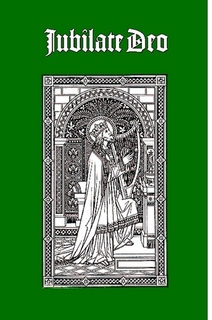The instruction titled “The Use of the Latin Language” was published by the Office for the Liturgical Celebrations of the Supreme Pontiff in April 2010 at the explicit request of Pope Benedict XVI. It remains in effect for papal liturgies under Pope Francis.

OFFICE FOR THE LITURGICAL CELEBRATIONS
OF THE SUPREME PONTIFF
THE USE OF THE LATIN LANGUAGE
Undoubtedly, Latin is the language that has the most longevity in the Roman Liturgy: It has been in use for over sixteen centuries, that is to say, from the time when the official liturgical language of the Church went from Greek to Latin – a change completed under Pope Damasus (+384). The official liturgical books of the Roman Rite are still published in Latin today (editio typica).
The Code of Canon Law (canon 928) stipulates: “The eucharistic celebration is to be carried out in the Latin language or in another language provided that the liturgical texts have been legitimately approved.” Taking into consideration the present situation, this canon translates in a concise manner the teaching of the Constitution of the Sacred Liturgy of the Second Vatican Council.
The well-known number 36 of Sacrosanctum Concilium established the following principle:
“Particular law remaining in force, the use of the Latin language is to be preserved in the Latin rites”(§ 1).
In this sense, the Code affirms first of all: “The eucharistic celebration is to be carried out in the Latin language.”
In the sections which follow, Sacrosanctum Concilium admits of the possibility of using also the vernacular languages:
“But since the use of the mother tongue, whether in the Mass, the administration of the sacraments, or other parts of the liturgy, frequently may be of great advantage to the people, the limits of its employment may be extended. This will apply in the first place to the readings and directives, and to some of the prayers and chants, according to the regulations on this matter to be laid down separately in subsequent chapters. (§ 2)
“These norms being observed, it is for the competent territorial ecclesiastical authority mentioned in Art. 22, 2, to decide whether, and to what extent, the vernacular language is to be used; their decrees are to be approved, that is, confirmed, by the Apostolic See. And, whenever it seems to be called for, this authority is to consult with bishops of neighboring regions which have the same language. (§ 3)
“Translations from the Latin text into the mother tongue intended for use in the liturgy must be approved by the competent territorial ecclesiastical authority mentioned above.” (§ 4)
On the basis of those subsequent sections, the Code adds: “or in another language provided that the liturgical texts have been legitimately approved.”
As can be seen, likewise according to present norms, the Latin language still holds primacy of place as that language which, based on principle, the Church prefers, even though she recognizes that the vernacular can be useful for the faithful. In the present concrete situation, liturgical celebrations in Latin have become rather rare. Hence, a motivation for using Latin is because in the Papal Liturgy (but not only in the Papal Liturgy), Latin should be safeguarded as a precious inheritance of the Western liturgical tradition. Not by chance did the Servant of God, John Paul II recall that:
“The Roman Church has special obligations towards Latin, the splendid language of ancient Rome, and she must manifest them whenever the occasion presents itself” (Dominicae cenae, n. 10).
In continuity with the Magisterium of his Predecessor, Pope Benedict XVI, besides wishing that there would be a greater use of the traditional Latin language in liturgical celebrations, especially during international gatherings, wrote:
“Speaking more generally, I ask that future priests, from their time in the seminary, receive the preparation needed to understand and to celebrate Mass in Latin, and also to use Latin texts and execute Gregorian chant; nor should we forget that the faithful can be taught to recite the more common prayers in Latin, and also to sing parts of the liturgy to Gregorian chant” (Sacramentum Caritatis, n. 62).

